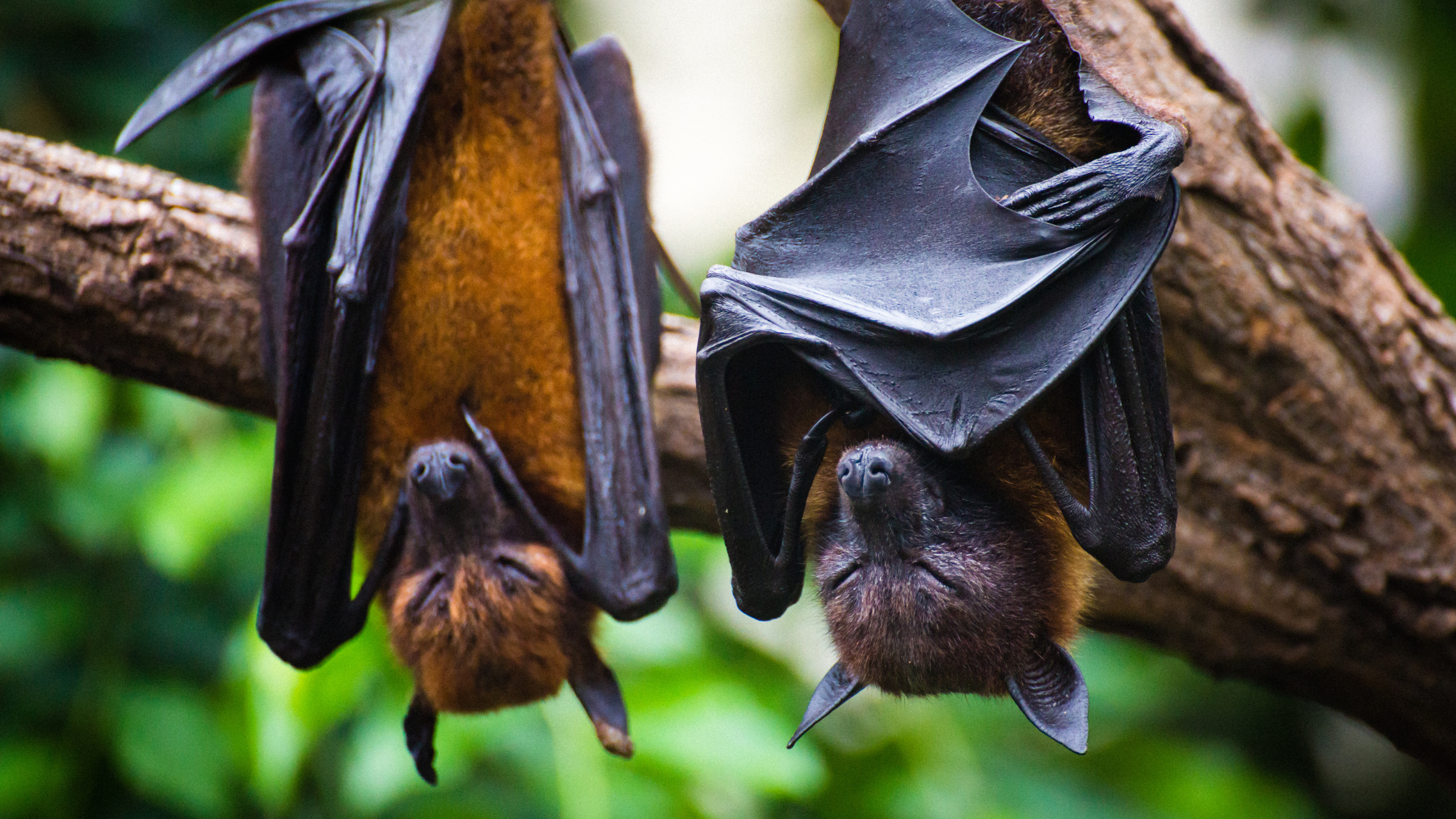
April 17th is World Bat Appreciation Day! Time to take a minute to think about what amazing animals bats really are.
Bats are one of the oldest types of mammal (warm-blooded animals that suckle their young) and one of the most successful – about 20% of all mammal species are bats. It seems that learning to fly has been a great career move on their part – they are, of course, the only flying mammals.
Traditionally, biologists have lumped bats into two broad groups: the little ones that eat insects and use echo-location to find their prey even in total darkness; and the larger, fruit- and blossom-eating species – the flying-foxes and their relatives. Things are a bit more complicated than that. The largest of the first group can be bigger than the smallest in the second. And diets in that “insect-eating” group are more diverse than that suggests. Some catch fish, others hunt mice and geckoes! Nevertheless, it’s a pretty handy general distinction to make.
Both groups are prominent members of the Australian mammal fauna, and there will always be some species to be found anywhere in our wide brown land. There are at least 24 different species of bat present in the Maranoa district. Mostly they live secretive lives and are rarely seen. As a result, most of us don’t know much about them. Being creatures of the night, bats have over the centuries been the subject of myths and superstitions, and generally haven’t received a good press. That’s a shame because they do some great things for the environment, some of which directly benefit us.
An individual insect-eating bat may consume half its own body weight of insects in a night, almost every night of its life (and they may live for decades). That translates into dozens to hundreds of insects a night – these bats are major regulators of insect populations, including ones we don’t like. Mosquitoes can be bad after summer rain, but they would be far worse if bats weren’t doing their bit to control them. Research in Europe, the USA and Australia has also shown that insectivorous bats eat huge numbers of pest insects as they fly over commercial crops.
The flying-foxes eat both fruits and the nectar and pollen from flowering trees. They often carry away fruits of rainforest trees to eat somewhere else and so are important dispersers of the seeds which fall to the ground and germinate, keeping the rainforest alive. When they feed from flowers, they carry pollen from one flower to the next, including between trees a long way apart. Doing this, they help the trees set seed and reproduce. This happens in rainforests and the wide diversity of eucalyptus forests. That includes all the commercially important trees in Australia – the timber and honey-producers – as well as all those other trees that together make up our amazing forests. The nomadic Little Red Flying-fox Pteropus scapulatus (the only one we see in the Maranoa on a regular basis) travels thousands of kilometres doing this job through the year.
So, spare a moment or two in appreciation of the humble bats, going quietly about their business and making our world all the better in doing so.

